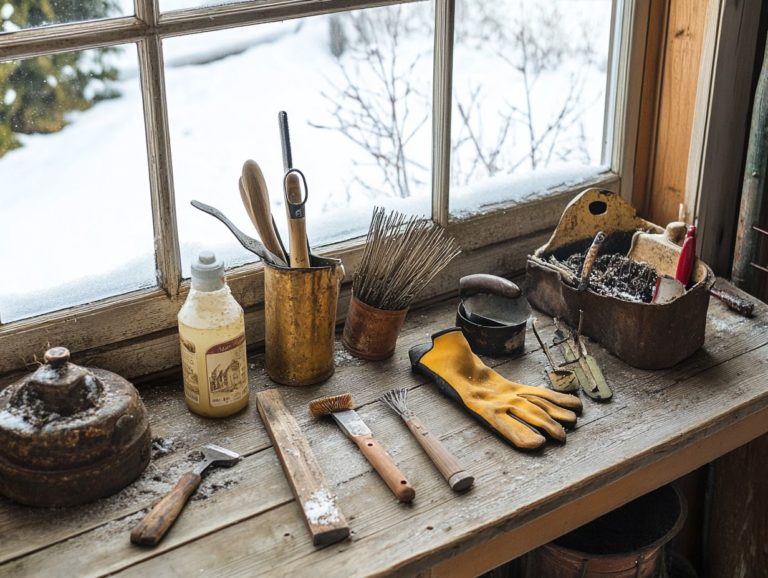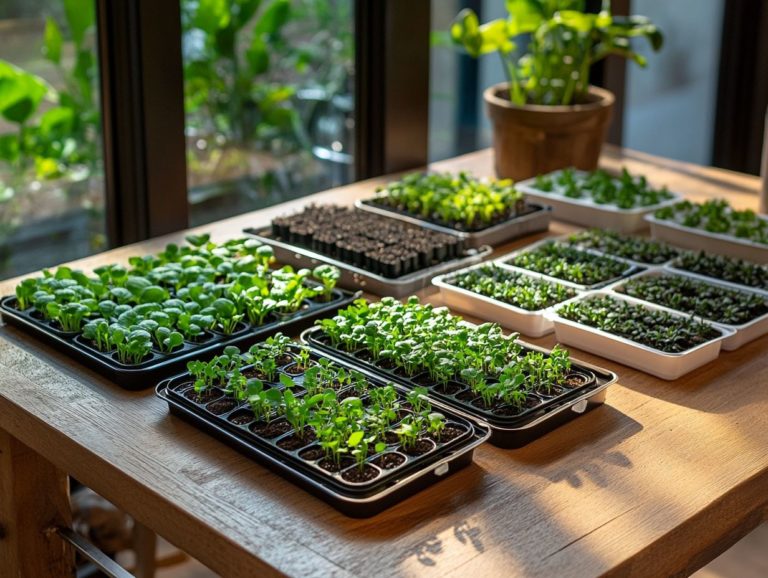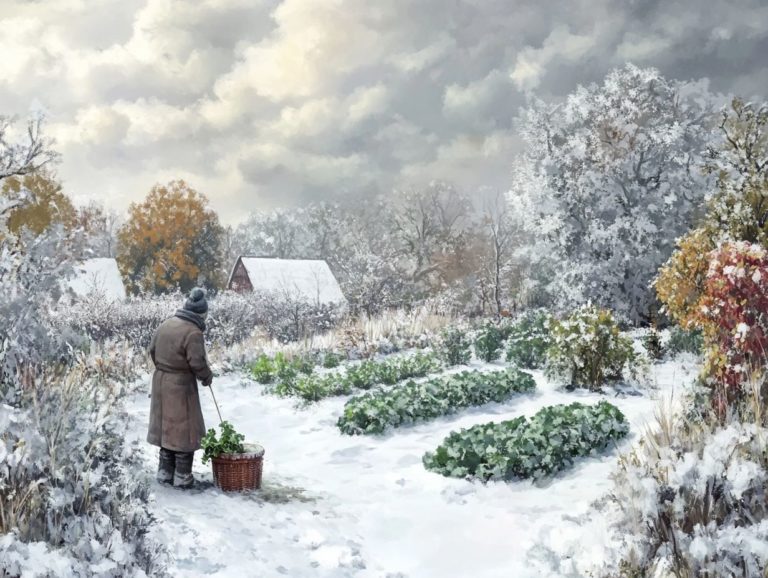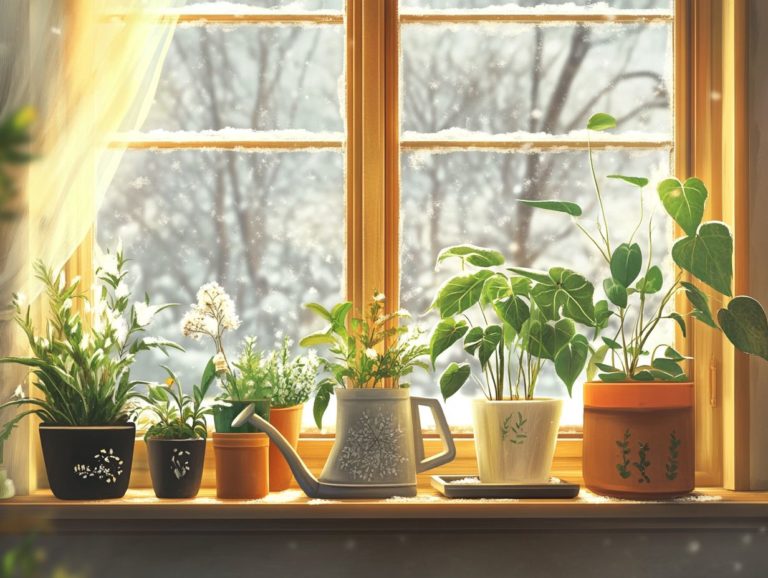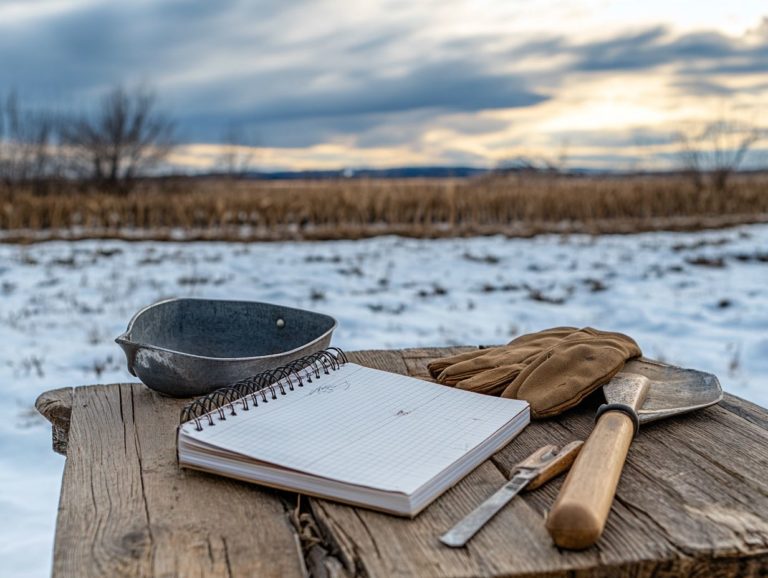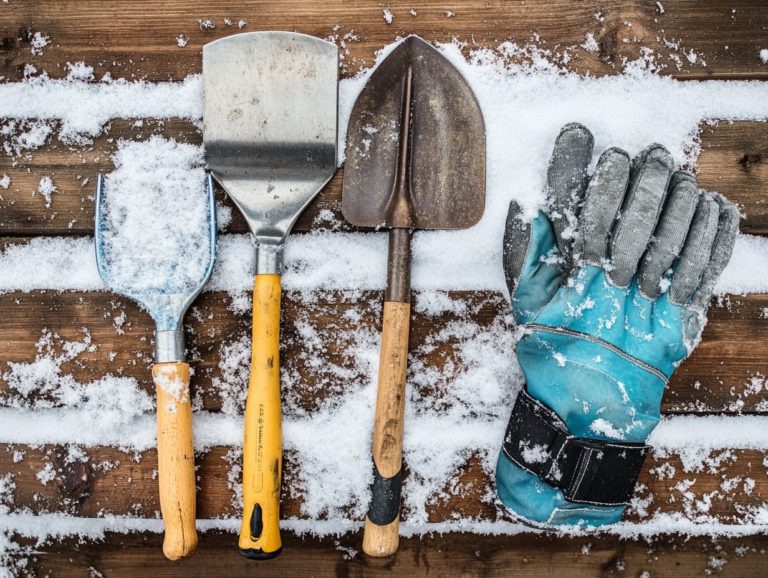Top 5 Essential Cold-Climate Plant Food Tools
Gardening in cold climates brings its own set of challenges. But with the right tools at your disposal, you can cultivate a thriving garden throughout the year.
In this guide, you’ll discover the top five essential tools every cold-climate gardener should have. From sturdy garden forks to reliable pruning shears, we ll delve into their key features and benefits, highlighting how each tool can significantly enhance your gardening success.
Whether you re a seasoned gardener or just beginning your journey, these tools will empower you to navigate the frosty landscape with ease and confidence.
Contents
- Key Takeaways:
- 1. Garden Fork
- 2. Hand Trowel
- 3. Pruning Shears
- 4. Watering Can
- 5. Soil Thermometer
- What Are the Key Features to Look for in Cold-Climate Plant Food Tools?
- What Are the Different Types of Garden Forks and Their Uses?
- How Can a Hand Trowel Help with Gardening in Cold Climates?
- What Are the Benefits of Using Pruning Shears for Cold-Climate Plants?
- Why Is a Watering Can Essential for Cold-Climate Gardening?
- How Can a Soil Thermometer Help with Plant Nutrition in Cold Climates?
- Frequently Asked Questions
- What are the top 5 essential cold-climate plant food tools?
- How should I use a shovel for cold-climate gardening?
- Why is a hoe important for cold-climate gardening?
- What is the best type of hand trowel for cold-climate gardening?
- How often should I water my cold-climate plants?
- Why is mulching important for cold-climate plants?
Key Takeaways:

- 1. A garden fork is a versatile tool that helps aerate and mix soil in cold climates, promoting healthy root growth.
- 2. A hand trowel is a small but essential tool for precision planting and weeding, making it easier to tend to delicate plants.
- 3. Pruning shears are crucial for maintaining the health and shape of cold-climate plants, helping to remove dead or damaged branches and promote new growth.
1. Garden Fork
The garden fork is your secret weapon for thriving in cold gardening! It’s especially important if you’re diving into autumn crops or winter gardening. For those looking to enhance their garden, consider these top tips for selecting cold-hardy plants.
This tool is essential for breaking up soil clumps and incorporating amendments, which dramatically enhances soil health as you prepare your raised beds for planting.
This versatile implement comes in various forms. For example, digging forks are perfect for turning over heavy, compacted soil. Bypass shears cut like scissors, making them great for soft stems, while anvil shears have a straight blade that crushes tougher wood.
Each type has its own unique role in food cultivation, ensuring nutrients penetrate deeply to promote healthier growth.
When selecting quality garden tools, choose ones crafted from durable materials, as they enhance both longevity and efficiency. By incorporating garden forks into your sustainable gardening practices, you can nurture soil that supports robust crops while minimizing your environmental footprint.
2. Hand Trowel
A hand trowel is an important gardening tool, especially when planting seeds and cultivating crops in your home or market garden. It s perfect for growing herbs and vegetables efficiently.
This versatile tool also plays a vital role in maintaining soil structure. It allows you to aerate and mix compost easily, ultimately boosting nutrient availability.
The hand trowel also handles smaller tasks well, such as transplanting seedlings from pots to the ground without risking damage to delicate roots.
Its compact design makes it easy to maneuver in tight spaces, giving you the precision needed to create small planting holes or remove pesky weeds. Whether you re working on a backyard vegetable patch or a larger community garden, the hand trowel is an essential companion!
3. Pruning Shears
Pruning shears, often referred to as pruning scissors, are essential tools in your gardening arsenal. They allow you to maintain healthy plants and encourage growth through regular pruning, especially if you’re committed to organic gardening practices.
These specialized tools come in different types. Bypass shears are perfect for delicate branches, while anvil shears are designed for tougher wood. The design of these shears significantly impacts your ability to remove dead or diseased branches, ensuring that nutrients are efficiently channeled toward healthy growth.
Understanding which shears are best for specific tasks whether it s shaping, thinning, or cutting back plants can greatly enhance your seasonal gardening efforts. Employ proper methods like making clean cuts and avoiding over-pruning to further boost plant vitality through strategic intervention.
Don’t miss out on these essential tools that can transform your gardening experience! Ready to elevate your gardening game? Grab these tools and start your journey today!
4. Watering Can
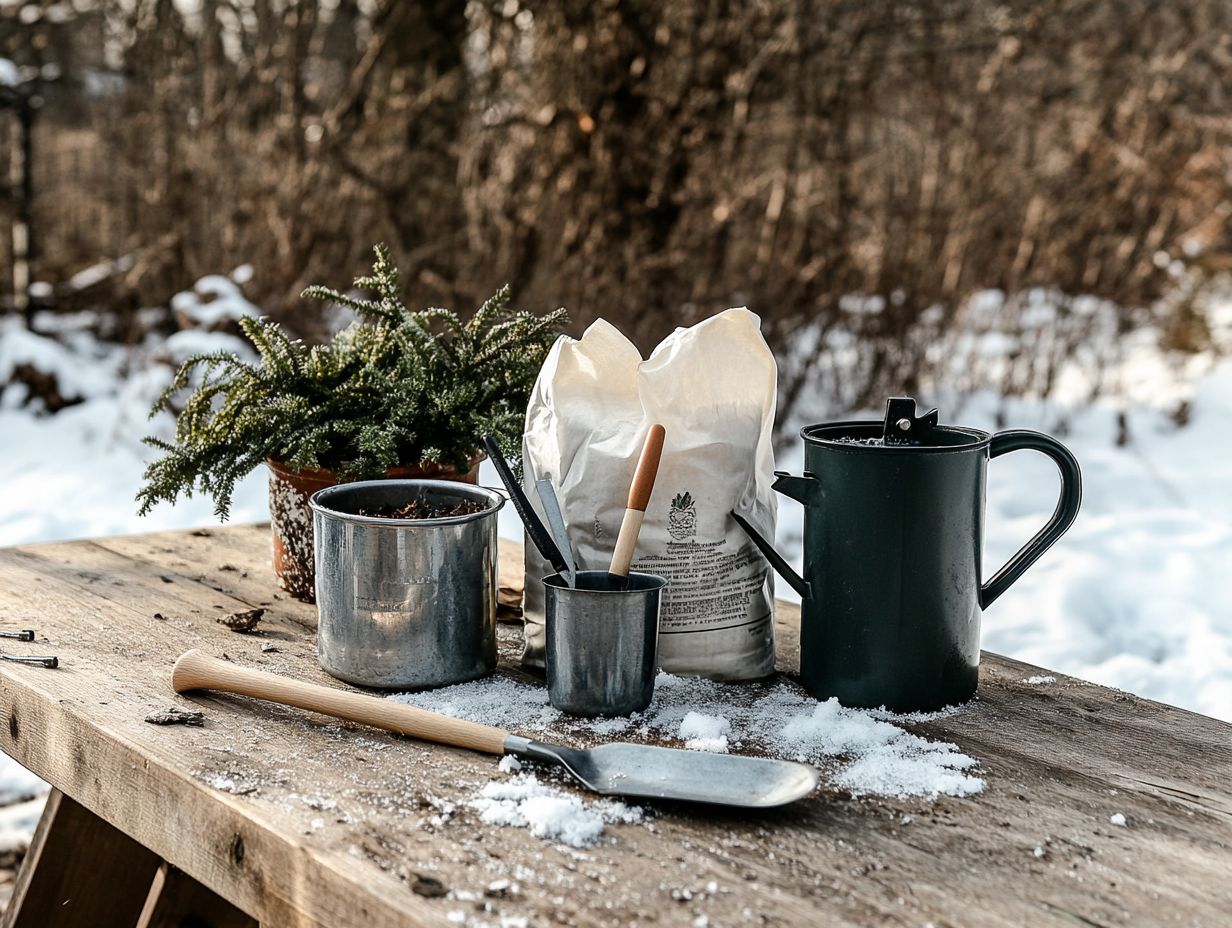
Looking for the perfect watering can? A watering can is an essential tool in your gardening arsenal, playing an important role in the protection of your plants by ensuring they receive the hydration they need. This is crucial for nurturing fresh produce and maintaining the best conditions for your soil, particularly in vegetable gardening.
When you re on the hunt for the ideal watering can, consider important features such as size, spout design, and material. A larger can can hold more water, reducing those frequent trips for refills. A narrow spout offers precision watering, allowing you to target the roots without drenching the leaves this little trick can help fend off diseases.
Opting for a can crafted from durable yet lightweight materials can transform the task into a more enjoyable experience. But don t stop at selecting the right tools! Learning how to water correctly is equally vital, as it has a direct impact on your seasonal plants’ health and the overall yield of your crops. Ensuring each plant receives just the right amount of water allows them to thrive, no matter the weather conditions.
5. Soil Thermometer
A soil thermometer is a critical gardening tool that enables you to monitor soil temperature, ensuring optimal conditions for growing food, especially when you’re cultivating those cold-weather crops. With this tool, you can make precise adjustments to your planting schedules and techniques.
Grasping how soil temperature affects plant growth and nutrient availability is vital for any gardener. A well-calibrated thermometer allows you to detect subtle temperature shifts that can significantly impact seed germination and root development.
When you use this tool correctly, it can reveal the ideal moments to amend the soil for optimal nutrient uptake, leading to healthier plants. In your home garden, it gives you the power to cultivate your favorite varieties effectively. In market gardening, it can mean the difference between a bountiful harvest and a disappointing yield, underscoring its importance in both scenarios.
What Are the Key Features to Look for in Cold-Climate Plant Food Tools?
When you’re selecting tools for cold-climate gardening, it’s crucial to prioritize features that enhance your cultivation efforts and provide robust crop protection. For detailed insights, check out what tools are essential for cold-climate gardening. Look for durability, efficiency, and compatibility with LED grow lights to nurture your plants under challenging conditions.
A sturdy spade crafted from rust-resistant stainless steel can be a game changer when breaking through frozen soil. Ergonomic handles will help minimize strain during those extended gardening sessions. Additionally, following the top 5 tips for planting in cold climates can further protect your seedlings from frost with insulated plant covers that retain soil warmth, significantly boosting their chances of survival and growth!
Using planting trays with drainage systems helps maintain optimal moisture levels, ensuring your crops thrive even amidst temperature fluctuations. Plus, choosing tools that integrate seamlessly with compost bins will enrich your soil with nutrients, which is essential for your vegetable garden to flourish throughout the changing seasons.
What Are the Different Types of Garden Forks and Their Uses?
Garden forks come in various types, each tailored for specific gardening tasks, such as loosening soil to enhance its health, mixing in compost, or preparing raised beds for planting all essential elements of sustainable gardening practices.
Traditional digging forks are your go-to for turning over compacted soil and breaking up stubborn clumps, with their robust tines ensuring efficient aeration, which is vital for the flourishing of roots. When you need to tackle finer tasks, a pitchfork proves exceptionally handy, allowing you to move lighter materials like straw or mulch without disturbing the soil beneath too much.
You might find border forks particularly appealing due to their smaller size, perfect for planting in tight spots or working within established beds. By utilizing these versatile tools, you enhance the structure and texture of the soil, promoting better drainage and nutrient absorption, which ultimately supports vibrant plant life.
How Can a Hand Trowel Help with Gardening in Cold Climates?
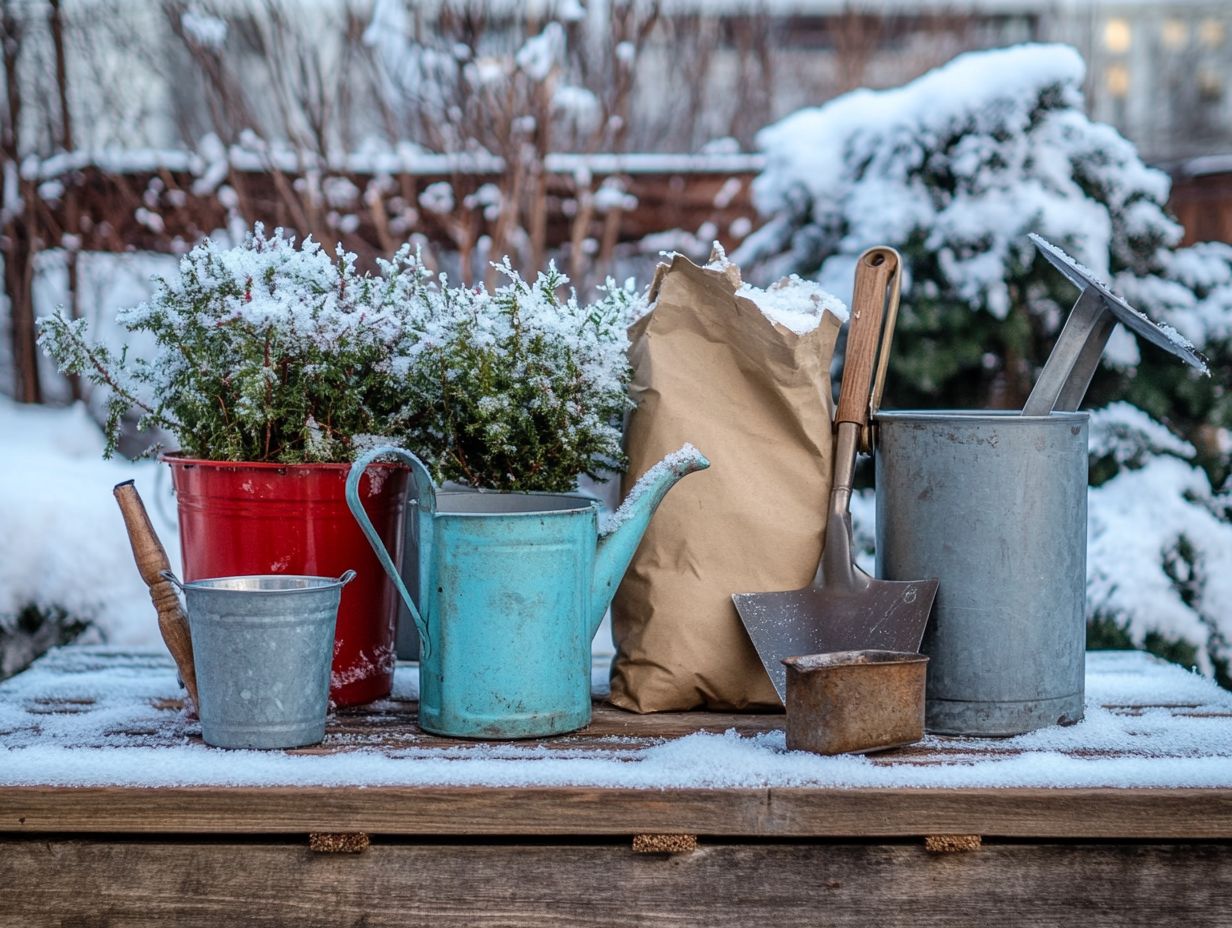
A hand trowel is invaluable in cold climates. Its compact design enables you to plant vegetables efficiently in raised beds and containers.
This creates a more rewarding growing experience, even when conditions are less than ideal. In brisk environments, you’ll find the hand trowel particularly useful for transplanting seedlings.
The trowel allows you to gently relocate young plants while minimizing disruption to their roots. It s also essential for soil aeration, making small holes in the soil so air and water can reach the roots better.
When selecting the right hand trowel, prioritize options with a sturdy, rust-resistant blade and an ergonomic handle that offers a comfortable grip. This ensures you can work with ease despite the chill.
Look for one featuring a slightly curved blade to facilitate digging and maneuvering through packed soil, guaranteeing optimum performance in your gardening pursuits.
What Are the Benefits of Using Pruning Shears for Cold-Climate Plants?
Using pruning shears for your cold-climate plants is a game changer for effective crop protection. They help you maintain healthy plant structures, which is essential for preventing disease.
By promoting air circulation within dense foliage, pruning shears reduce humidity levels that often lead to fungal infections. Selectively removing dead or diseased branches prevents the spread of pathogens.
It also allows the remaining parts of the plant to thrive without competing for nutrients. Proper pruning is crucial for plant health, creating a less hospitable environment for pests.
This practice attracts beneficial insects that feast on harmful species. Embracing this holistic approach nurtures a vibrant ecosystem, significantly enhancing the overall vitality of your vegetable garden.
Why Is a Watering Can Essential for Cold-Climate Gardening?
A watering can is your secret weapon for thriving gardens in cold weather! It offers precise water delivery that preserves soil health and optimizes conditions for growing fresh produce, even as temperatures dip.
In environments where frost and chill pose challenges, grasping the intricacies of watering becomes paramount. Selecting a watering can designed specifically for winter use enhances both ease and effectiveness.
Seek out options with insulation to keep the water warm, reducing shock to plant roots. Employing techniques like deep watering fosters stronger root systems.
Watering in the late afternoon ensures that plants can absorb moisture before night sets in. By adopting these strategies, you can ensure that, even in a frosty landscape, your garden thrives and remains productive.
How Can a Soil Thermometer Help with Plant Nutrition in Cold Climates?
A soil thermometer is essential in cold climates. It provides invaluable insights into soil temperature, which is crucial for assessing plant nutrition and optimizing conditions for growing food. For those interested in expanding their gardening toolkit, check out winter gardening tools that can help you thrive.
Understanding soil temperature helps you evaluate which nutrients are available to your crops. Cooler soil often restricts the availability of important nutrients like nitrogen and phosphorus.
Monitoring these temperature changes enables you to make informed decisions about when to fertilize and the best timing for planting. Integrating a soil thermometer into your regular gardening practices is key.
Ensure measurements are taken at various depths to capture the optimal growing environment. Effectively applying these insights can significantly boost crop yield and enhance produce quality in colder regions.
Frequently Asked Questions
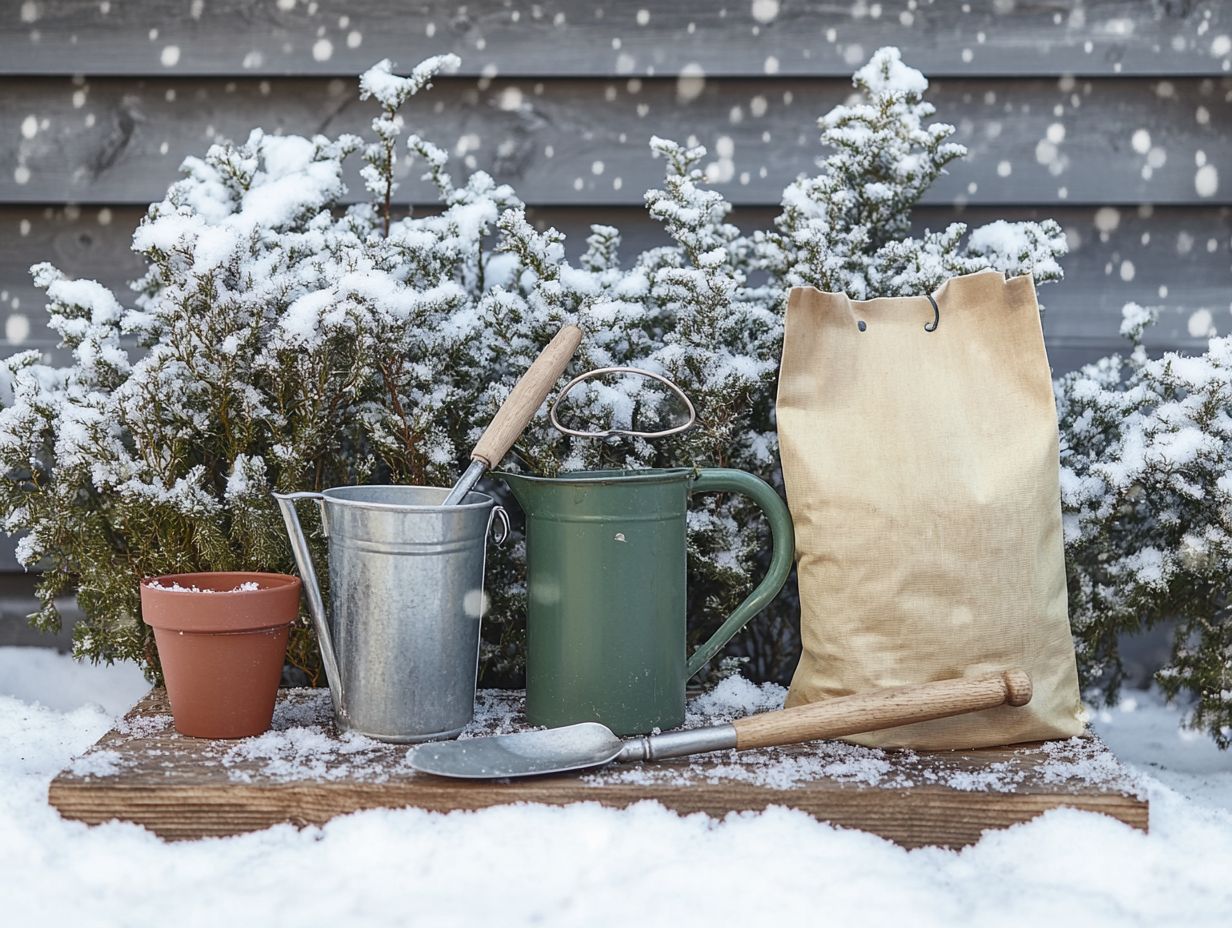
What are the top 5 essential cold-climate plant food tools?
- Shovel
- Hoe
- Hand trowel
- Watering can
- Mulching tool
Act now to protect your plants with these essential tools!
How should I use a shovel for cold-climate gardening?
A shovel is a must-have tool for any gardener. It s essential for digging, aerating, and clearing debris.
Why is a hoe important for cold-climate gardening?
In cold climates, the soil can become hardened and compacted. A hoe is vital for breaking it up, which helps roots grow better and absorb nutrients.
What is the best type of hand trowel for cold-climate gardening?
A hand trowel with a sharp, pointed blade is ideal for cold-climate gardening. It cuts through tough soil easily and is perfect for transplanting seedlings, especially when paired with the top essential watering tools for winter.
How often should I water my cold-climate plants?
Plants in cold climates may not need watering as often as those in warmer areas. Regularly check soil moisture and water when necessary to prevent plants from drying out.
Why is mulching important for cold-climate plants?
Mulching is a game-changer! It insulates the soil, keeping it warm and protecting plant roots from freezing.
It also retains moisture and suppresses weeds.

